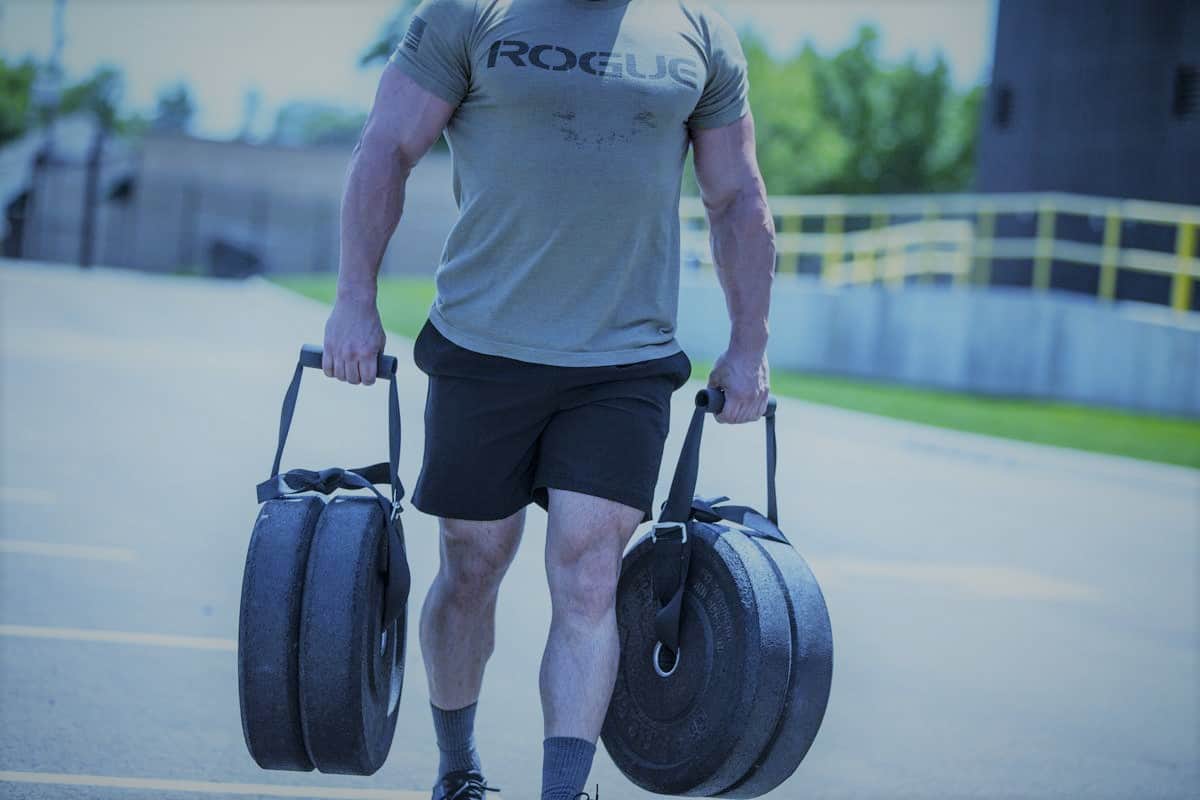Our capacity to build muscle tissue is, in terms of its potential for remodeling, adaptation, and change, endlessly fascinating. Our muscles adapt to resistance training almost immediately, albeit slowly, and these gains manifest themselves not only temporarily but permanently. Yes, the progress you make through strength training is permanent – to a degree. More on that later.
Muscles adapt to resistance exercise almost immediately. Our body is in a constant flux between catabolic and anabolic states, and it’s during anabolism that our body invests proteins in the repair and growth of muscle tissue following appropriate training stimulus. Without training, our body will only build muscle it needs to continue existing.
Untrained muscle grows faster, for reasons I’ll explain later. A person with relatively low muscle mass is also further away from their genetic limit, which contributes to why they build more muscle in the first few months of training, versus gains made within the same period after several years of training.
While we do begin to build muscle almost immediately after training, these changes are still relatively small. It takes time for them to become appreciable. The common number given to beginners is about 12 weeks, at which point gains in muscle mass are typically appreciable.
Other factors, such as age and hormone levels (natural HGH and testosterone, which drop off as we get older) help explain the rate at which muscle fibers are created and increase in size. Finally, not all gains made in muscle size are due to bigger/more myofibrils (contractile rod-like units within a muscle fiber).
Every muscle fiber has a sarcoplasm which increases in size as a muscle grows bigger in order to hold a greater volume of myoglobin, glycosomes, and water, used during exercise for energy and oxygen. This means someone who trains in a fashion that calls for more energy (i.e. higher metabolic need) will create superficially larger muscles (which is the basis for the bodybuilding mantra of training within 8-12 repetitions, versus lower reps).
Why Do Muscles Grow?
All muscle tissue can contract and stretch. But muscles can contract in three different ways: concentric contraction (bringing your wrist up to your shoulder concentrically contracts the biceps), eccentric contraction (slowly lowering your wrist while fighting against a load of some kind is an eccentric contraction), and isometric contraction (the muscle contracts but does not shorten or lengthen, like holding something at arm’s length). Concentric and eccentric contractions are also called isotonic contractions (wherein the muscle contracts and lengthens or shortens).
Whenever you exceed a muscle’s typical capacity (through intensity or volume), you are giving your body the training stimulus it needs to justify investing into your muscles as a resource. This is because your muscles are critical to survival – we need to move effectively and efficiently in order to procure food and survive.
However, this interest in our own survival is also why the human body only possesses a limited capacity to build muscle. This is because muscle is incredibly energy hungry. Because of this energy efficiency measure, our body produces myostatin to limit muscle growth. It doesn’t cost that much more energy to be really big, but it costs a lot more energy to move all that muscle. As such, our bodies want to make sure we only have as much muscle tissue as we really need. Muscular hypertrophy is about doing everything we can to keep our bodies consistently investing in our muscles.
Side note: While in theory blocking myostatin would allow us to achieve Ultra-Jacked God status, research also shows that myostatin deficiency does not improve the overall resources used to prevent oxidative stress within contracting muscles, resulting in weaker relative strength (far lower force output) in myostatin-deficient rodents (despite appreciably larger muscles).
So how does the body build muscle? Whenever training stimulus and enough resources (i.e. energy and complete amino acids) are available, the body increases the size of specific muscles during our daily cycle of protein breakdown and synthesis. When stimulus calls for it and the resources exist, the synthesis will outdo the breakdown. However, the body being as efficient as it is does not rely on a central governor to relay this signal.
Instead of building muscle everywhere, it only builds the muscles that were used a lot. It does so via satellite cells that exist outside of our muscle fibers. These cells recognize the damage caused to the fiber and merge with the muscle, fusing together to help repair the damage. Some of these satellite cells become new myonuclei, which are responsible for a certain volume of muscle around it. In other words, the more myonuclei you have, the more your muscles can grow in response to these myonuclei. They’re basically the control centers for muscle fibers.
This is where things get really interesting because while the human body naturally breaks muscle down if it isn’t being used, you don’t lose your myonuclei as quickly as you do muscle mass. Instead, you retain them even as your muscle fibers are broken down in absence of training stimulus. This is where the idea of “muscle memory” comes from. Rather than remembering how strong you were, your muscles simply have an easier time of getting back to the size and strength they once had due to the presence of more myonuclei within your muscle fibers.
Myonuclei addition happens before muscle hypertrophy, and without the prerequisite myonuclei, your muscles won’t grow. Some people are genetically predisposed to grow more myonuclei, and there are other things that help increase myonuclei addition (from your own testosterone and creatine, to anabolic steroids).
Explaining Newbie Gains
That being said, newbies don’t have an elevated number of myonuclei, so what gives? Why do they grow much faster than people who have been training for a long time?
One big factor is the repeated-bouts effect. This states that when a person engages in a single bout of eccentric exercise, their body adapts to reduce the stress and damage caused by that exercise the next time it is performed. This basically “stacks”, so the longer you do an exercise, the less effective it becomes at increasing muscle growth. This isn’t just exercise-specific, but movement specific. If you do a lot of curls, you will not only become more proficient at curling (and use your muscles more efficiently, i.e. less muscle damage), but the effects of your training diminish even as you try to overload.
This is also why you grow muscle quickly after coming back from being detrained for a long time. The important link to draw here is the fact that both newbie gains and muscle memory can be partially explained by this effect. Just as muscles lose size when detraining, they also lose the adaptations that occur during the repeated-bouts effect. Thus, when doing an exercise you haven’t done in weeks or months, your anti-inflammatory adaptations from before are gone, and you’ll be much more sore – and you’ll gain your strength and size back much faster.
This is because your body is reacting to the damage by increasing muscle size – and by doing it over and over again, your body will learn to stem the inflammation and cut into its own muscle-building response. And thus, you’ll eventually hit the point where you can’t put on more muscle.
Your Natural Limit
There seems to be a correlation between bone mass and muscle mass, in that we generally possess roughly 1:5 bone to muscle. This means that the thicker and bigger your bones are, the more muscles you can carry. This will be almost completely based on genetics, and there isn’t much you can do about it without HGH.
You can, however, try and get as close to your genetic limit of muscle as possible. Steroids make this easier, of course, but your drug-free potential can still be calculated roughly based on your bone width and mass, and the closer you get to this limit, the harder it becomes to put on more muscle. The exact mechanisms behind this limit are not understood. Perhaps it has something to do with how the body regulates how much muscle we can pack on. Perhaps it limits our myonuclei addition to the point where we cannot have more than 5 kilograms of meat per kilogram of bone.
In any case, you build muscle faster when you don’t have much, to begin with, and haven’t trained in a while. If you’ve already trained in the past, your potential for growth is even higher as you regain your lost size and strength faster than an untrained individual (the combined effects of more myonuclei and lack of anti-inflammatory adaptations that would otherwise limit muscle growth). Yet the closer you get to the 1:5 limit, the slower you gain muscle.
What does this mean? Well, no one can give you an exact number of how much muscle mass you’ll put on in any given time period. All estimates are just that, estimates, and can be wildly inaccurate. Even without steroids, some people are genetically built to get super jacked. Others aren’t. Just get to training. And if you need to take a break, don’t sweat it – your gains will come back quickly.
Want to lift heavier and avoid injuries? 💪🔥
Download our FREE '5-Minute Warm-Up Routine for Maximum Lifting Performance' and get primed for every workout!
Click below to grab your copy now!👇
👉 Download the Free Guide




